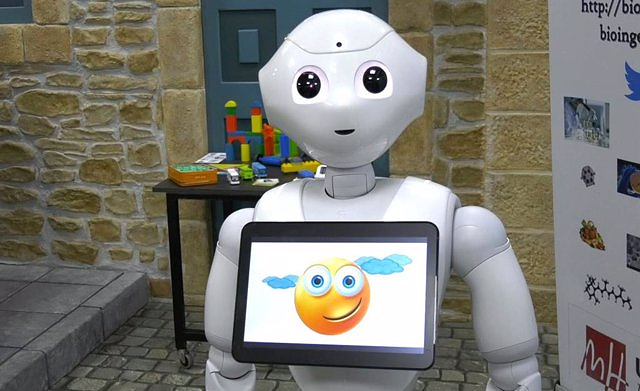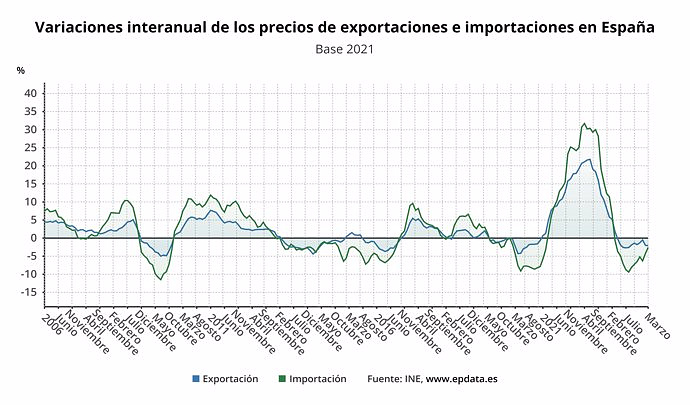ALICANTE, 5 Feb. (EUROPA PRESS) -
Research led by the Miguel Hernández University of Elche (UMH), together with the Polytechnic University of Cartagena (UPCT), evaluates the usefulness of robots capable of expressing emotions for the treatment of Autism Spectrum Disorders (ASD). The objective is to offer personalized solutions, which integrate social robots, to improve the behavior and social response of children with these disorders.
Many of these children have problems recognizing emotions and one of the objectives of the project is to help them recognize and manage emotional information, as indicated by the Elche academic institution in a statement.
The director of the Biomedical Neuroengineering Group and the Bioengineering Institute of the UMH, Eduardo Fernández, has explained that it is a multidisciplinary project, in which experts in biomedical engineering, robotics, pediatrics and neurorehabilitation collaborate to try to offer personalized solutions and systems. of help to professionals working in this field.
Robots are used so that children can better understand different emotional states. Furthermore, he added that children interact with robots, so for them it is a game, but he specified that the focus of the project is on the needs of the children, not on the robots.
For his part, the professor at the Polytechnic University of Cartagena José Manuel Ferrández, who coordinates the programming of the robotic systems, has highlighted that the project integrates aspects associated with biomedical engineering, such as advanced sensors of physiological signals, Artificial Intelligence techniques ( AI) and new human-like robots, capable of teaching these children what different expressions and emotions mean.
The researcher Francisco Sánchez Ferrer (UMH, FISABIO), who collaborates in the project, has detailed that this type of therapeutic approaches is based on the integration of the physiological, perceptual and behavioral responses of children. To do this, researchers at the UMH Bioengineering Institute use different techniques, for example, cameras for detecting gestures and emotions in faces, and AI techniques for emotion recognition.
They also use real-time measurements of the variation in the electrical properties of the skin and the cardiac activity of children during treatment and eye-tracking techniques, among others.
The project, in which UNED and Fisabio also collaborate, is focused on increasing the motivation and emotional responses of children with ASD with the help of social robots to help them improve their socialization and communication skills.

 Exploring Cardano: Inner Workings and Advantages of this Cryptocurrency
Exploring Cardano: Inner Workings and Advantages of this Cryptocurrency Seville.- Economy.- Innova.- STSA inaugurates its new painting and sealing hangar in San Pablo, for 18 million
Seville.- Economy.- Innova.- STSA inaugurates its new painting and sealing hangar in San Pablo, for 18 million Innova.- More than 300 volunteers join the Andalucía Compromiso Digital network in one month to facilitate access to ICT
Innova.- More than 300 volunteers join the Andalucía Compromiso Digital network in one month to facilitate access to ICT Innova.-AMP.- Ayesa acquires 51% of Sadiel, which will create new technological engineering products and expand markets
Innova.-AMP.- Ayesa acquires 51% of Sadiel, which will create new technological engineering products and expand markets Borrell points out that several EU countries may recognize the State of Palestine in May
Borrell points out that several EU countries may recognize the State of Palestine in May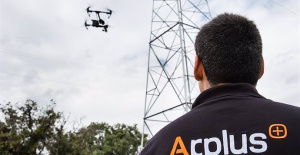 The CNMV prohibits the funds that sold shares to Apollo in its takeover bid from purchasing more Applus securities
The CNMV prohibits the funds that sold shares to Apollo in its takeover bid from purchasing more Applus securities STATEMENT: SUNRATE partners with YeePay to empower Chinese companies to navigate global expansion
STATEMENT: SUNRATE partners with YeePay to empower Chinese companies to navigate global expansion Nadal is still alive and exciting in Madrid
Nadal is still alive and exciting in Madrid How Blockchain in being used to shape the future
How Blockchain in being used to shape the future Not just BTC and ETH: Here Are Some More Interesting Coins Worth Focusing on
Not just BTC and ETH: Here Are Some More Interesting Coins Worth Focusing on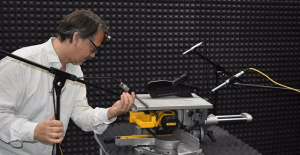 They create a bank of machinery sounds to prevent breakdowns through artificial intelligence
They create a bank of machinery sounds to prevent breakdowns through artificial intelligence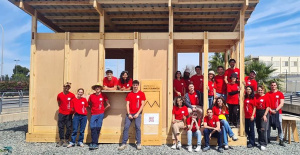 UPV students build a prototype of a wooden house to move to Equatorial Guinea
UPV students build a prototype of a wooden house to move to Equatorial Guinea The UA opens the call for the Impulso 2024 Awards for the best innovative business initiatives
The UA opens the call for the Impulso 2024 Awards for the best innovative business initiatives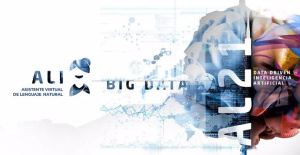 ALI, virtual assistant from Alicante, internationally recognized by the OECD
ALI, virtual assistant from Alicante, internationally recognized by the OECD A million people demonstrate in France against Macron's pension reform
A million people demonstrate in France against Macron's pension reform Russia launches several missiles against "critical infrastructure" in the city of Zaporizhia
Russia launches several missiles against "critical infrastructure" in the city of Zaporizhia A "procession" remembers the dead of the Calabria shipwreck as bodies continue to wash up on the shore
A "procession" remembers the dead of the Calabria shipwreck as bodies continue to wash up on the shore Prison sentences handed down for three prominent Hong Kong pro-democracy activists
Prison sentences handed down for three prominent Hong Kong pro-democracy activists ETH continues to leave trading platforms, Ethereum balance on exchanges lowest in 3 years
ETH continues to leave trading platforms, Ethereum balance on exchanges lowest in 3 years Investors invest $450 million in Consensys, Ethereum incubator now valued at $7 billion
Investors invest $450 million in Consensys, Ethereum incubator now valued at $7 billion Alchemy Integrates Ethereum L2 Product Starknet to Enhance Web3 Scalability at a Price 100x Lower Than L1 Fees
Alchemy Integrates Ethereum L2 Product Starknet to Enhance Web3 Scalability at a Price 100x Lower Than L1 Fees Mining Report: Bitcoin's Electricity Consumption Declines by 25% in Q1 2022
Mining Report: Bitcoin's Electricity Consumption Declines by 25% in Q1 2022 Oil-to-Bitcoin Mining Firm Crusoe Energy Systems Raised $505 Million
Oil-to-Bitcoin Mining Firm Crusoe Energy Systems Raised $505 Million Microbt reveals the latest Bitcoin mining rigs -- Machines produce up to 126 TH/s with custom 5nm chip design
Microbt reveals the latest Bitcoin mining rigs -- Machines produce up to 126 TH/s with custom 5nm chip design Bitcoin's Mining Difficulty Hits a Lifetime High, With More Than 90% of BTC Supply Issued
Bitcoin's Mining Difficulty Hits a Lifetime High, With More Than 90% of BTC Supply Issued The Biggest Movers are Near, EOS, and RUNE during Friday's Selloff
The Biggest Movers are Near, EOS, and RUNE during Friday's Selloff Global Markets Spooked by a Hawkish Fed and Covid, Stocks and Crypto Gain After Musk Buys Twitter
Global Markets Spooked by a Hawkish Fed and Covid, Stocks and Crypto Gain After Musk Buys Twitter Bitso to offset carbon emissions from the Trading Platform's ERC20, ETH, and BTC Transactions
Bitso to offset carbon emissions from the Trading Platform's ERC20, ETH, and BTC Transactions Draftkings Announces 2022 College Hoops NFT Selection for March Madness
Draftkings Announces 2022 College Hoops NFT Selection for March Madness